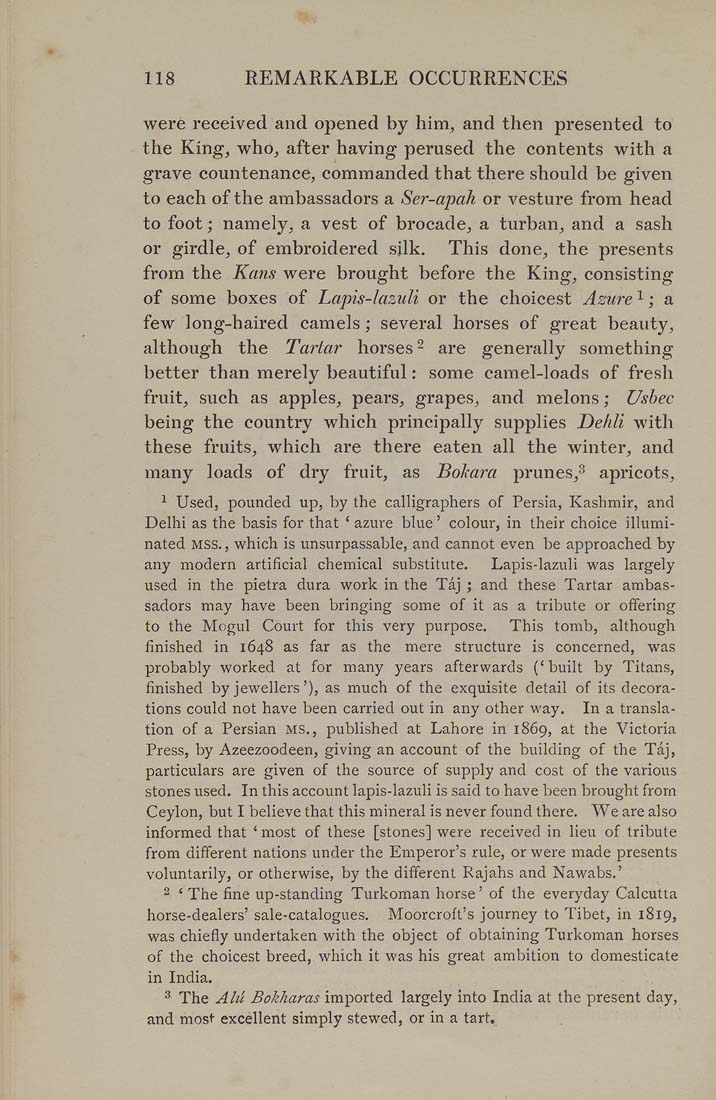118 REMARKABLE OCCURRENCES
were received and opened by him, and then presented to
the King, who, after having perused the contents with a
grave countenance, commanded that there should be given
to each of the ambassadors a Ser-apah or vesture from head
to foot; namely, a vest of brocade, a turban, and a sash
or girdle, of embroidered silk. This done, the presents
from the Kans were brought before the King, consisting
of some boxes of Lapis-lazuli or the choicest Azure!; a
few long-haired camels; several horses of great beauty,
although the Tartar horses ^ are generally something
better than merely beautiful: some camel-loads of fresh
fruit, such as apples, pears, grapes, and melons; Usbec
being the country which principally supplies Dehli with
these fruits, which are there eaten all the winter, and
many loads of dry fruit, as Bokara prunes,-* apricots,
' Used, pounded up, by the calligraphers of Persia, Kashmir, and
Delhi as the basis for that ' azure blue' colour, in their choice illumi¬
nated MSS., which is unsurpassable, and cannot even be approached by
any modern artificial chemical substitute. Lapis-lazuli was largely
used in the pietra dura work in the Taj ; and these Tartar ambas¬
sadors may have been bringing some of it as a tribute or offering
to the Mogul Court for this very purpose. This tomb, although
finished in 1648 as far as the mere structure is concerned, was
probably worked at for many years afterwards ('built by Titans,
finished by jewellers'), as much of the exquisite detail of its decora¬
tions could not have been carried out in any other way. In a transla¬
tion of a Persian MS., published at Lahore in 1869, at the Victoria
Press, by Azeezoodeen, giving an account of the building of the Taj,
particulars are given of the source of supply and cost of the various
stones used. In this account lapis-lazuli is said to have been brought from
Ceylon, but I believe that this mineral is never found there. We are also
informed that ' most of these [stones] were received in lieu of tribute
from different nations under the Emperor's rule, or were made presents
voluntarily, or otherwise, by the different Rajahs and Nawabs.'
^ ' The fine up-standing Turkoman horse' of the everyday Calcutta
horse-dealers' sale-catalogues. Moorcroft's journey to Tibet, in 1819,
was chiefly undertaken with the object of obtaining Turkoman horses
of the choicest breed, which it was his great ambition to domesticate
in India.
' The A hi Bokharas imported largely into India at the present day,
and most excellent simply stewed, or in a tart.
|








